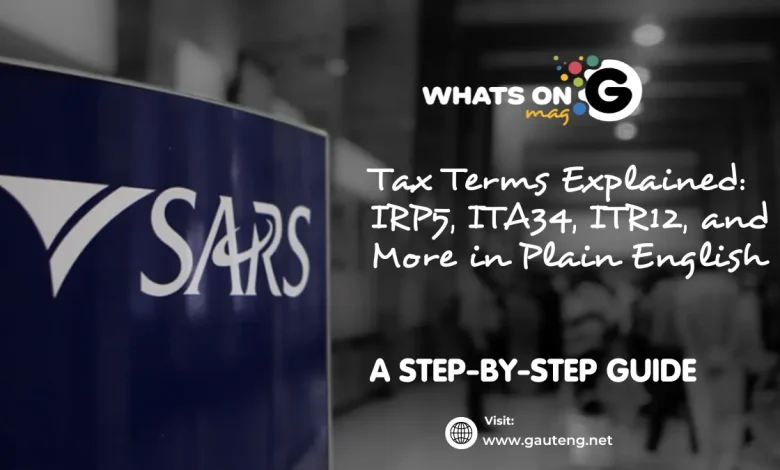Tax Terms Explained: IRP5, ITA34, ITR12, and More in Plain English

Navigating the world of South African tax can often feel overwhelming, with acronyms and terms that seem designed to confuse. Understanding key documents like the IRP5, ITA34, and ITR12 is essential for every taxpayer to ensure compliance and manage their finances effectively. This article breaks down these common tax terms and explains their purpose in clear, simple language.

ALSO READ: Forgot Your SARS Password? Here’s How to Reset It Without Visiting a Branch
IRP5: Your Employee Tax Certificate
The IRP5 is an official tax certificate issued by your employer at the end of each tax year. It summarizes your gross income, all deductions made (like PAYE, UIF, and SDL), and the total tax withheld from your salary during the tax year (which runs from 1 March to the end of February). This document contains crucial information that SARS uses to calculate your tax liability. You might receive more than one IRP5 if you had multiple employers within the same tax year.
What is the IT3(a)?
An IT3(a) is similar to an IRP5 but is issued when no tax was due or deducted from your income. It still shows the gross income you received, but includes a specific source code (4150) to explain why no tax was withheld. Both IRP5 and IT3(a) certificates are vital for completing your annual income tax return.
ITR12: Your Annual Income Tax Return
The ITR12 is the income tax return form that individuals use to declare their income and expenses to SARS. Taxpayers use this form to enable SARS to calculate their tax liability for a given year of assessment. The information from your IRP5 or IT3(a) certificates should be pre-populated onto your ITR12 when you access it through SARS eFiling or the SARS MobiApp. It is essential to ensure that the information on your IRP5/IT3(a) matches what is on your ITR12.
What Information Goes into an ITR12?
Beyond your IRP5/IT3(a) data, the ITR12 requires various other details to determine your final tax position:
- Personal and employment status information.
- Details of other income, such as rental income, investment income (like interest and dividends from IT3(b) certificates), or business income.
- Deductions you wish to claim, including medical aid contributions, medical expenses not covered by medical aid, retirement annuity contributions, and travel allowances (if applicable).
- Information on capital gains transactions.
You must keep all supporting documents for at least five years, even if you don’t submit them with your return, in case SARS requests them later.
ITA34: Your Assessment Notice
Once you submit your ITR12, SARS processes it and issues an ITA34 assessment. This document details SARS’s calculation of your tax liability based on the information you provided in your ITR12. The ITA34 will indicate whether you owe SARS money, are due a refund, or if your tax liability is zero. It serves as an official record of your tax assessment for the year. This document also contains a unique identifier number that may be required for future tax declarations, such as for rental income.
Understanding Source Codes
Your IRP5 certificate will display various source codes that identify different types of income and deductions. For instance, codes starting with 39 often indicate a lump sum payment received during the tax year, such as a retirement fund withdrawal. Codes like 4001, 4003, 4005, and 4006 represent contributions to pension, provident, medical aid, and retirement annuity funds, respectively. Familiarizing yourself with these codes helps you understand your income statement more thoroughly.
Fundamental Tax Terms
Understanding these fundamental tax terms – IRP5, IT3(a), ITR12, and ITA34 – empowers you to confidently navigate your tax obligations in South Africa. These documents collectively provide a comprehensive overview of your earnings, deductions, and final tax liability. By paying attention to these forms and ensuring accuracy, you can maintain compliance with SARS and manage your financial affairs effectively.



